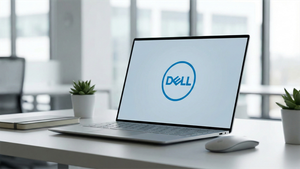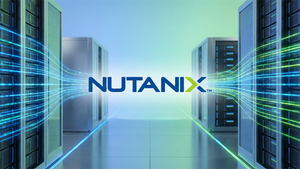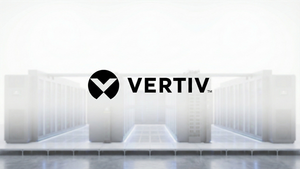WASHINGTON, July 17, 2023 (GLOBE NEWSWIRE) -- Today, Administrator Isabella Casillas Guzman announced the U.S. Small Business Administration (SBA) finalized a rule to modernize the Small Business Investment Company (SBIC) Program. Part of President Biden’s Investing in America Agenda, the SBIC Investment Diversification and Growth Rule will increase access and diversify funding for the small business, start-up, and investment management communities. The SBIC Investment Diversification and Growth final rule will become effective on August 17, 2023.
“SBIC-licensed funds have seeded and scaled some of the most innovative and successful businesses in the world and helped small businesses sustain operations across the country by helping them bridge capital gaps to build innovative and resilient businesses,” said Administrator Guzman. “This final rule will unlock unrealized potential and strengthen, diversify, and expand our network of SBIC-licensed private funds to address capital deficiencies in underserved small businesses, startups, and critical U.S. industries impacting our nation’s security.”
The SBIC Investment Diversification and Growth Rule addresses structural aspects of the SBIC Program, which have historically limited the flow of equity and growth-oriented debt investments from SBIC-licensed funds to small businesses and start-ups operating in underserved communities, capital-intensive industries, and technology areas critical to U.S. national security and economic development. These communities, industries, and technologies are not sufficiently financed by private market investors due to lack of access, duration of investment, risk/return profile, or magnitude of capital required.
Highlights of the final rule include:
- Addresses need for long-duration and equity funds: Introduces a new debenture instrument to the program portfolio called the “Accrual Debenture” to align with the cash flows of longer duration and/or equity-oriented investment funds. Funds that are licensed using this financial instrument will be called “Accrual SBICs.” Accrual SBICs will be eligible for 1.25x tiers of leverage. The SBA will not participate in the profits of Accrual SBICs. The SBICs will pay SBA accrued interest and principal upon distribution event.
- Improving program accessibility: Modifies licensing fees to reduce the financial burden for new program applicants. Broadens the fund manager track record and eligibility requirements to enable a more diversified group of investment teams and a wider range of investment strategies to participate in the SBIC program.
- Fund-of-Funds to increase access: Introduces a new type of SBIC called the “Reinvestor SBIC” based on a fund-of-funds model to invest equity in underlying funds with an underserved focus that, in turn, invest directly into small businesses and start-ups. Fund-of-funds Reinvestor SBICs will utilize the Accrual Debenture instrument and be eligible for 2x tiers of leverage.
- Expediting subsequent funds: Introduces a risk-controlled expedited subsequent fund licensing process for eligible applicants to create capacity for SBA to license more new-to-program applicants while maintaining a high degree of customer service for existing program participants.
- Streamlining paperwork: Reduces points of friction for program participants and their investors in multiple areas: a) indicating the SBA’s total intended financial commitment at the time of conditional (“Green Light”) fund approval to accelerate the fundraising process; b) accepting FASB GAAP compliant valuations for non-leveraged Licensees; c) eliminating the need for SBA pre-approval of a capital call line; d) eliminating the need for SBA approval by granting safe harbor for eligible follow-on funding of a portfolio company through a non-SBIC vehicle managed by the principals of the SBIC.
- Strengthening Controls: To help improve risk management, SBA has also implemented several changes, including a) codifying a formal Watchlist for early identification of potential performance or compliance risk; b) enhancing reporting requirements to help monitor investment performance in addition to credit risk; and c) phasing in a 40-basis point Annual Charge floor to give SBA sufficient loss reserve to enable expansion of investment strategies supported by the SBIC program.
- Clarifying affiliation: Clarifies that a U.S. small business with equity investment by an SBIC Licensee is deemed “unaffiliated,” based on Small Business Act regulations, from the licensed fund and its portfolio companies. As a result, unless affiliation is triggered by another relationship, the portfolio companies of an SBIC Licensee are considered “unaffiliated” under SBA regulations.
“From semiconductors to personal computers to electronic vehicles, public-private SBIC partnerships have advanced the growth of industries by financing start-ups and small businesses vital to their communities and our broader national supply chain. With the modernization of SBIC regulations, SBA will play an enabling role in partnering with return-seeking private investors to fund businesses in corners of the economy critical to our national security and economic success,” said Bailey DeVries, Associate Administrator for Investment and Innovation and Acting Associate Administrator for Capital Access.
Since 1958, SBA has licensed and regulated private market investment funds as “SBICs.” SBICs invest or lend private capital, plus funds borrowed with an SBA guarantee, to make equity and/or debt investments in small businesses and start-ups. The program, established during the Eisenhower Administration, has led to the creation and growth of great American companies.
Today, the SBIC program is comprised of more than 308 discrete private funds across mezzanine, private credit, buyout, growth, venture, and multi-strategy, which collectively has more than $40 billion in public and private assets under management (AUM). Last year, SBICs invested $8 billion in more than 1,500 companies, which created and sustained over 103,000 U.S. jobs.
###
About the U.S. Small Business Administration
The U.S. Small Business Administration makes the American dream of business ownership a reality. As the only go-to resource and voice for small businesses backed by the strength of the federal government, the SBA empowers entrepreneurs and small business owners with the resources and support they need to start, grow, or expand their businesses, or recover from a declared disaster. It delivers services through an extensive network of SBA field offices and partnerships with public and private organizations. Learn more at sba.gov.
About SBA Office of Investment and Innovation
The U.S. Small Business Administration (SBA) Office of Investment and Innovation (OII) leads programs that provide the high-growth small business community with access to two things: financial capital and R&D funds to develop commercially viable innovations. Our work is underpinned by public-private partnerships that help small businesses on their trajectory from idea to IPO. Learn more at www.sba.gov.

Christine Saah Nazer U.S. Small Business Administration 202-756-0304 christine.saahnazer@sba.gov






